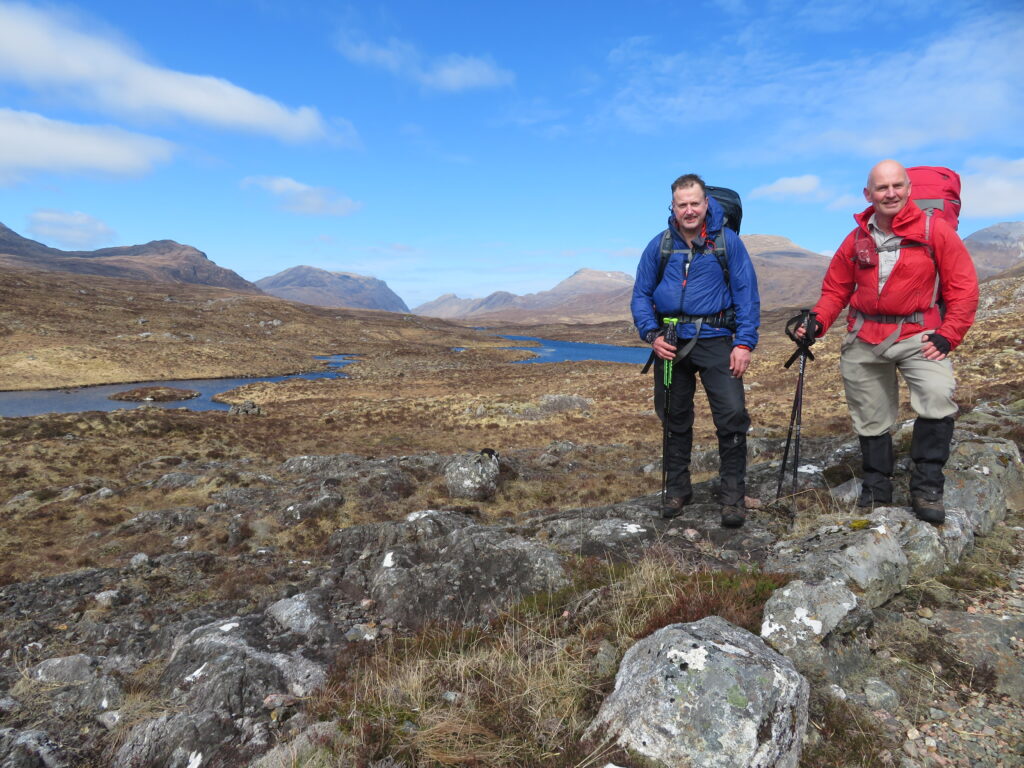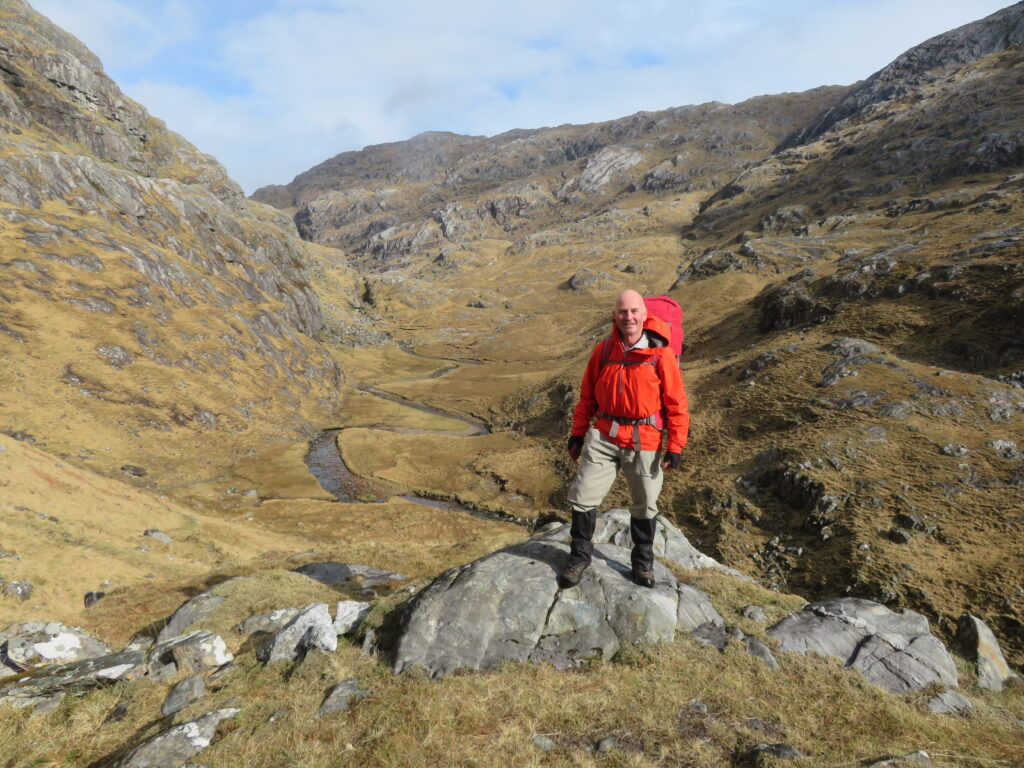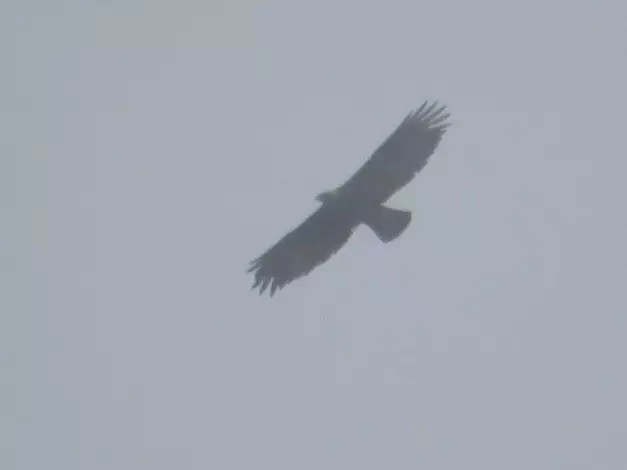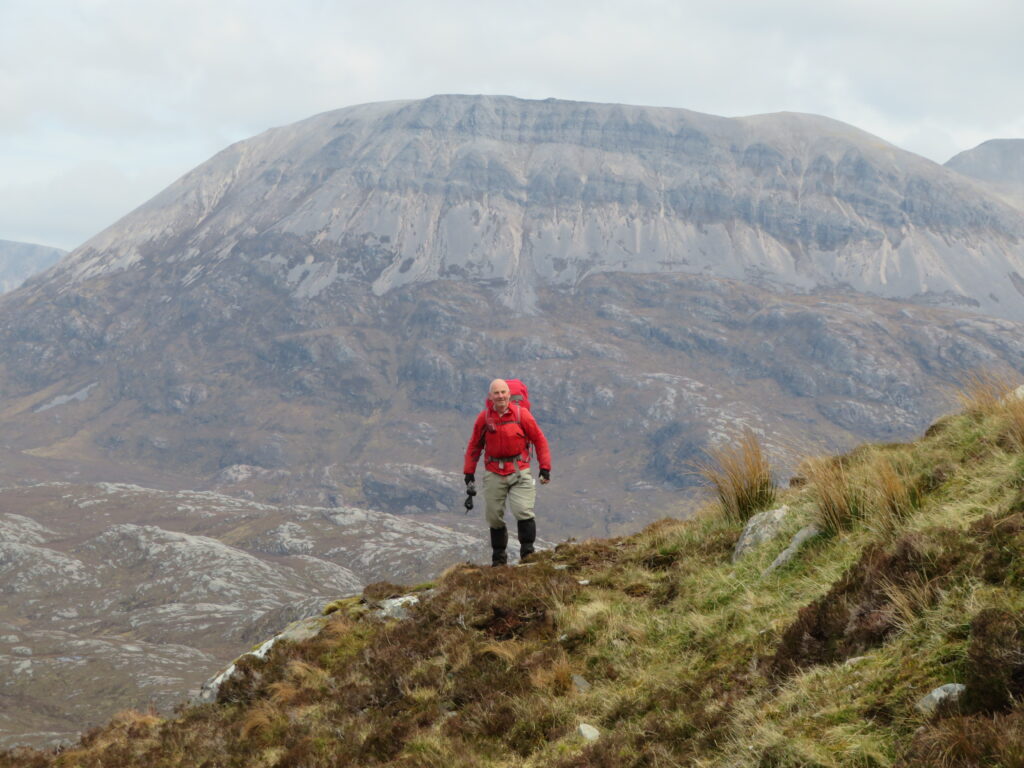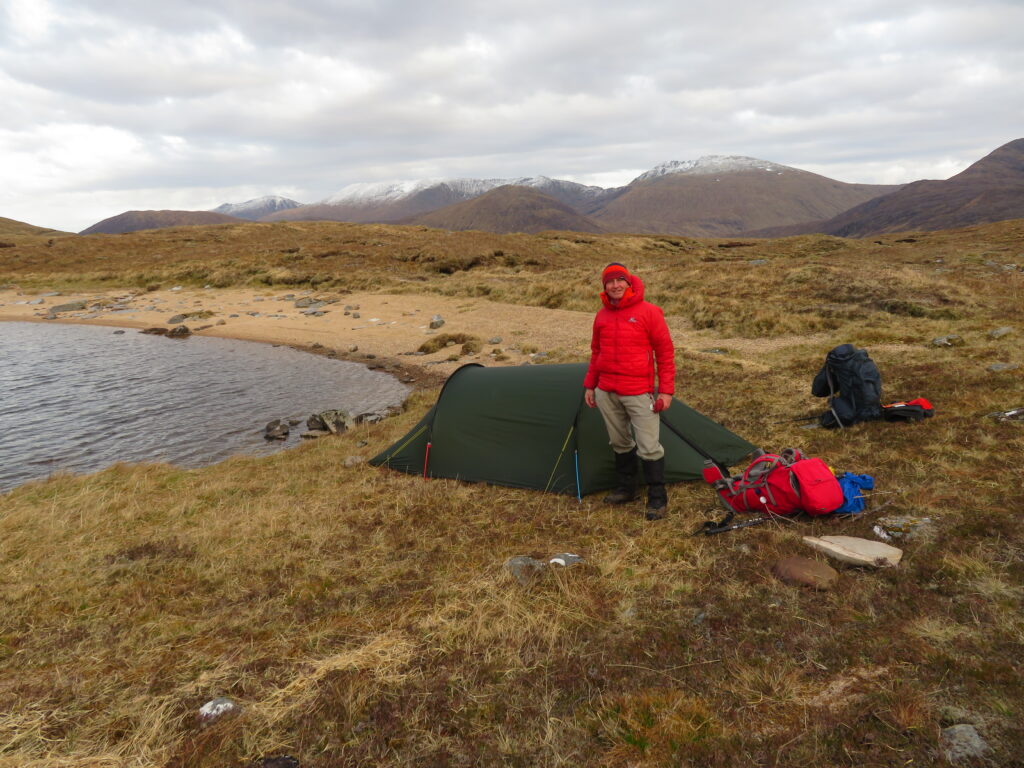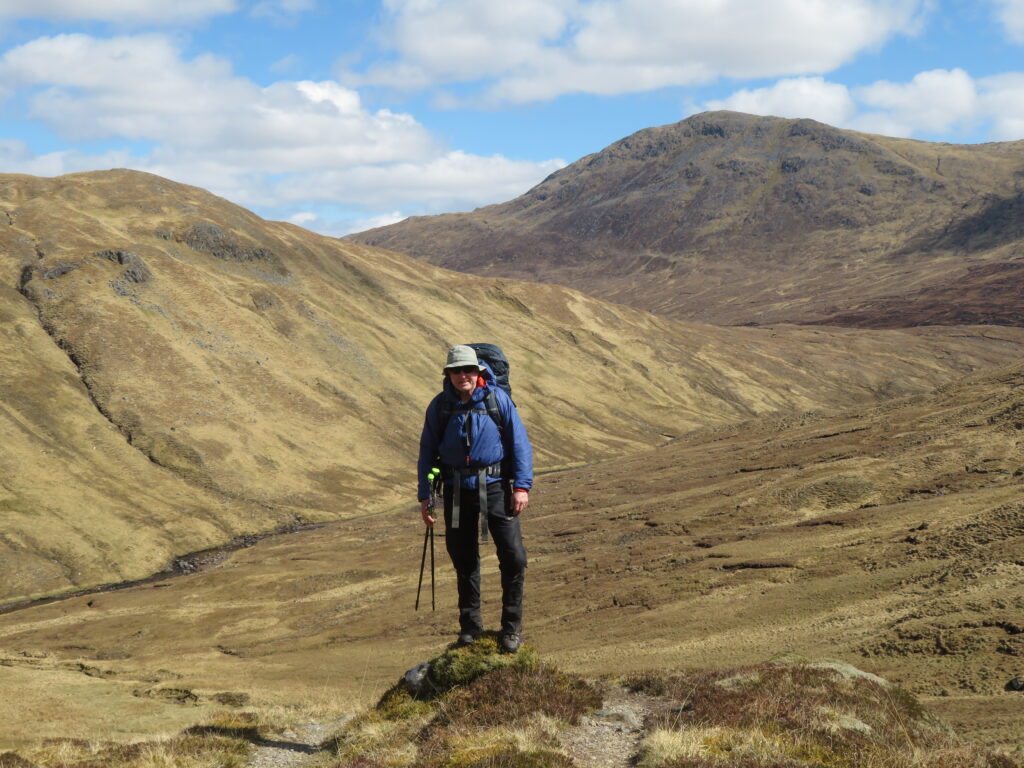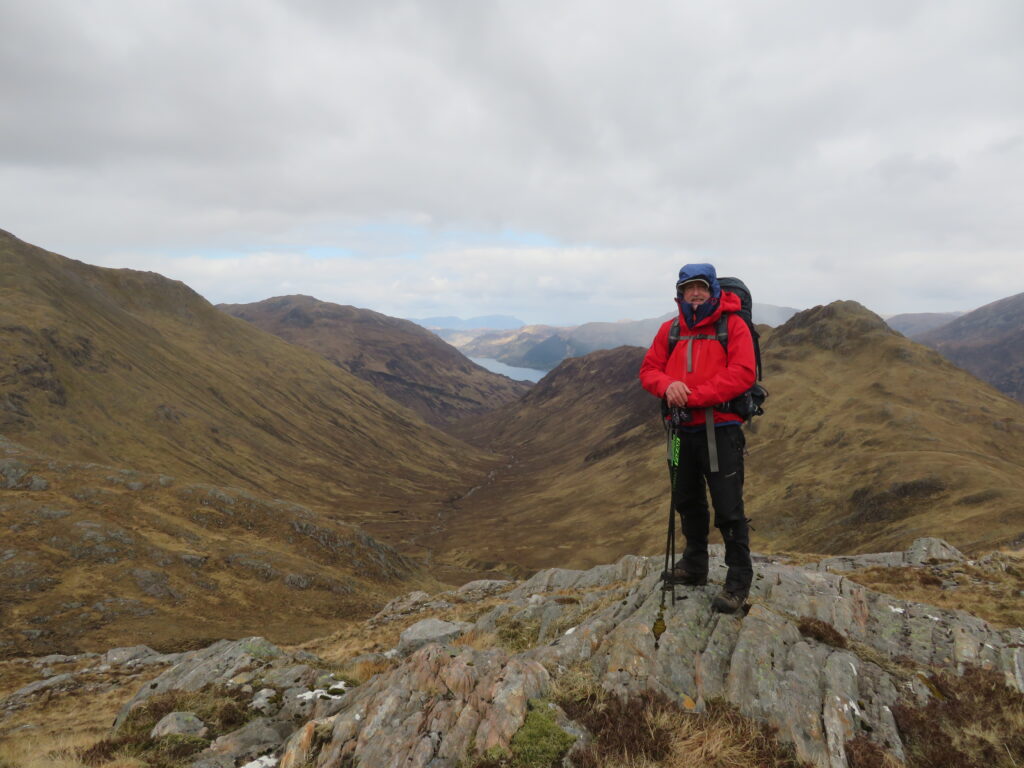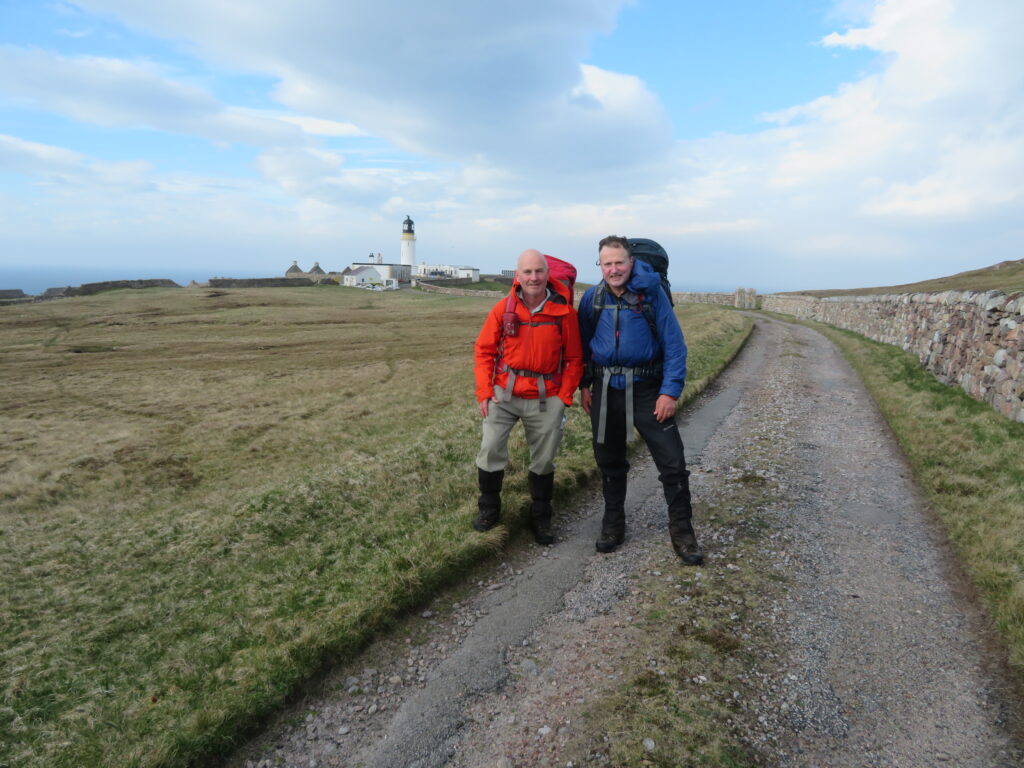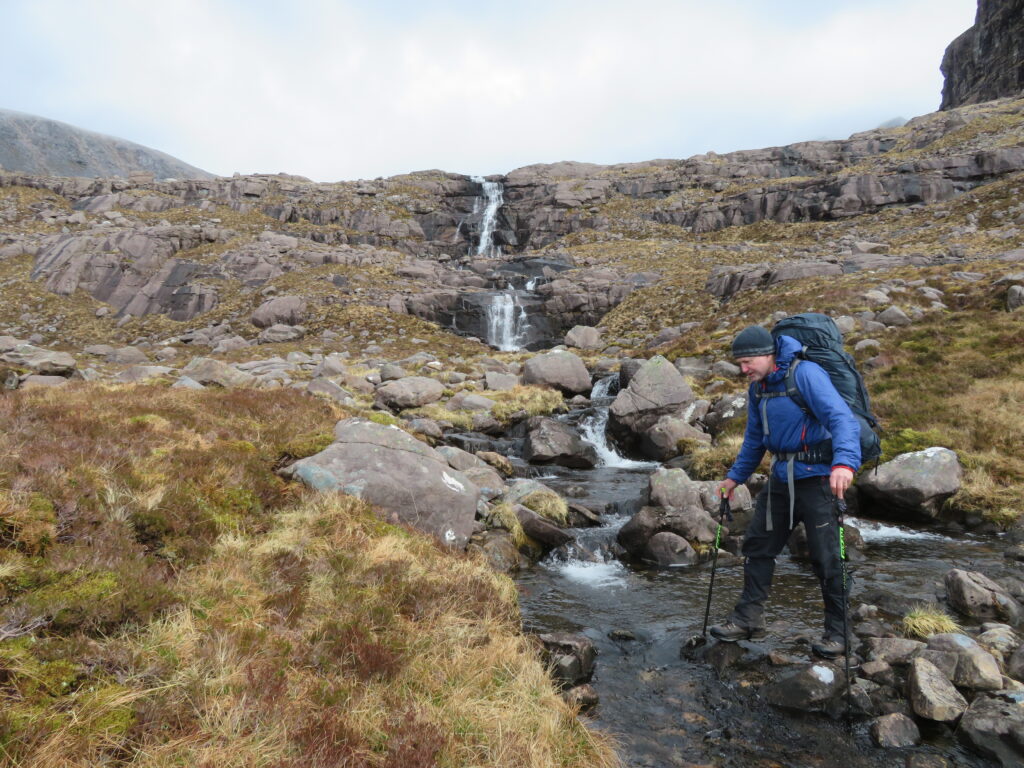On Friday 21 April 2023, former History teacher Mark Field set out on a 230-mile hike along a trail which is said to be the toughest in the British Isles, in aid of raising much needed funds for Derby Mountain Rescue, a cause he had recently joined as a volunteer.
“I love walking and while out in the mountains I have often felt reassured that there’s a team of dedicated people prepared to brave the hills at all hours, simply to save someone from the worst, and receive no remuneration for it.”
Keeping him company on the trail was his good friend, former colleague and expeditions co-ordinator, Peter Shuttleworth. The pair of intrepid walkers set off from Crewe on the sleeper train the day before, to arrive at their starting point in Fort William. Their goal was to reach Cape Wrath, on the northwest point of Scotland, by Saturday 6 May.
This was a journey that was undertaken with great courage, anticipation and compassion and which Mark recounts the experience in his own words.
“Pawel Cymbalista, originally from Poland, set a new record for the Cape Wrath Trail of 3 days 14 hours 49 minutes and 19 seconds shortly after Peter and I proudly completed it in 14 and a half days or thereabouts. We don’t feel our achievement has been diminished by this however, since Mr Cymbalista is clearly not only originally from another country but another planet!
In fact, we were thrilled to have completed the 230 miles in a time that was a day and a half ahead of our most optimistic forecast of 16 days, into which we had built a contingency of another week. It was a walk of spectacular beauty but also required digging deep into our reserves of endurance.
On the evening of day 4 for example, on the approach to Kinloch Hourn, I simply had to stop about a quarter of a mile from our scheduled evening destination for an energy bar to get me over the line. I wasn’t aware of it at the time, but I had ‘hit the wall’, apparently. It seemed a very apt expression at the time. No less apt than the unscheduled and relatively luxurious stop that followed, thanks to a very recently opened Bed & Breakfast, which, given the remoteness and inaccessibility of the spot must have been virtually dependent on Cape Wrath Trail hikers.
Prior to embarking on the hike, we had planned on staying in a number of bothies but nearly always ended up camping, thanks to good weather; this gave us greater flexibility and enhanced the walk’s adventurism and sense of remoteness. We did, however, meet a few fellow walkers on the way, one of whom, a truck driver from Banbury named Lee, was walking the trail solo and who, we’d like to think, we helped complete the walk.
On our final day at Sandwood Bay we found Lee taking a break and, it transpired, struggling to find the motivation to complete the final 8 miles due, partly at least, to a leg injury. So, with some words of encouragement and some well- worn banter based on trucker stereotypes, we’d like to think we helped Lee get over the line. At any rate he was genuinely relieved to see us and walked with us to the Cape Wrath lighthouse, happy not to have to navigate that last stretch due to his injury.
Speaking of navigation, we relied on the two Harvey’s maps which divide the trail into North and South and which were, by and large, pretty good once we’d got used to the 1:40 scale. They did omit marking one or two bothies which unexpectedly popped up, but we didn’t mind this. We also used the Cicerone guidebook to a lesser extent which again was pretty good and which, on the occasional days when we were beginning to think that the difficulty had been overstated, soon proved us wrong. This was partly due to our decision always to take the ‘proper’ route which invariably was the hardest, the Trail having a number of easier options at various points.
Probably the most arduous section of the whole Trail was the circumvention of Ruadh-stac Mor and Ruadh-stac Beag, on utterly pathless terrain where we were instructed to follow the 450m contour on the most rugged ground I have ever walked on. There was about 5.5kms of this before we reached a discernible path into Kinlochewe. None of the other walkers we met took this section on.
Regarding food, we carried our own supplies; ‘Expedition Food’ sachets providing the main dinner course and preferable, we thought, to ‘Adventure Food’ since for the same dehydrated weight each sachet provided a further 200 calories making 800. Suppers consisted of 3, sometimes 4 courses.
The first course went by various names to inflate its sophistication: beef consommé, oxtail soup, beef bourguignon soup, beef broth; but which, on every occasion, was in fact an Oxo cube dissolved with boiling water. The second course varied between Chilli Con Carne, Spaghetti Bolognaise, Lancashire Hot Pot, Thai Green Chicken Curry, Chicken Tikka Masala. In each case, a bag of dehydrated ingredients soaked for 6-8 minutes in boiling water and then eaten with a spoon. The third, and sometimes final course, unless we were really pushing the boat out, was after dinner mints, namely Kendal Mint Cake – with coffee. And in the event of a 4 courser, powdered custard was an option between the main course and the mints! Peter seemed to love this, being from Yorkshire, but I never actually tried it.
Deciding what to take and what not to take on the hike provided hours of discussion – yes, I know – quite fascinating. We even trialled spoons for eating, opting for the long-handled teaspoon which had at least two advantages to others, possibly three, we deduced. The first was that the gastronomic delights of expedition food could be savoured and prolonged and the second was that they enabled us to get right to the bottom and into the corners of the food sachets and so eliminated waste…all without getting bits of food on our hands – brilliant!
Accidents? Luckily there were only minor ones, but I defy anyone to complete such a walk without the odd slip or fall. In my case, the most memorable was almost falling into a loch while walking along its side on a narrow path when I grazed a boulder, which knocked me off balance and over I went. Had I actually fallen into the loch it would have only been a case of wet feet as it was just a few feet from the path. Peter similarly fell off a path and put in a couple of rolls before righting himself and guffawing with laughter.
Ticks? I didn’t get any, Peter discovered one on his leg.
Midges? None to speak of. However, the books say it’s ok to do the walk come September. Locals say that it definitely is not and that the midges are still bad then. So please note if you ever think of doing it.
Quirkiest person we met on the walk? A guitar teacher turned B&B owner who had a book collection to rival Waterstones: sections of the walls of one room were even compartmentalised into German History, 17th Century British History, English Literature etc. There were books literally against all the walls and he’d only read 20 per cent of them, he said!
Breath-taking moments? Spotting ,and Peter managing to photograph in mid-flight, a golden eagle.
On reaching the Cape Wrath lighthouse itself we felt an overwhelming sense of achievement. The walk had been 2 years in the planning, since we had originally intended doing it last year but injury prevented us from taking it on then. In some ways we were sorry it was over, and I think adrenalin must have had something to do with my suggestion to walk the 11 miles to the ferry point the next morning rather than catch the bus…. We caught the bus!
The raw beauty of the Scottish Highlands is beyond the scope of words here. It simply has to be seen.
Finally, I’d like to say a huge ‘thank you’ to everyone who has sponsored me so far and also a ‘thank you’ – hopefully in anticipation of a few more of you who might be inclined to do so…even though I’ve now completed the walk. I know the target keeps changing as I reach another financial milestone, but I’ll call it a day at £2000 which would be a fantastic sum to reach, particularly as Derby Mountain Rescue Team are developing a new base – one which doesn’t flood like our current one! – so every penny counts.’’
